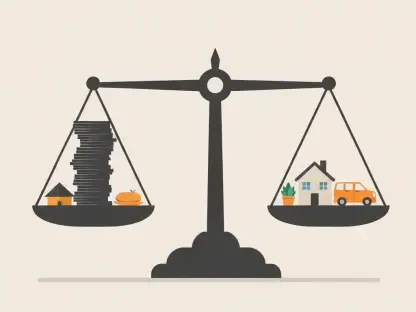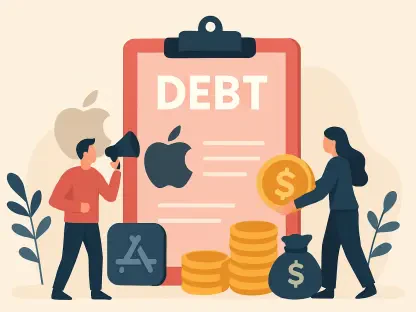Financial literacy and inclusion are pivotal for economic empowerment, poverty reduction, and financial stability. In India, these elements are essential for fostering a more equitable and prosperous society. This article delves into the current state of financial literacy and inclusion in India, the initiatives undertaken to improve them, and the challenges that persist. The necessity of imparting financial knowledge to empower the masses cannot be overstated, given that a significant proportion of the population remains financially under-informed. Such empowerment is vital for making informed decisions that can directly impact personal well-being and economic growth. Additionally, providing accessible financial services to marginalized groups can lift many out of poverty, facilitating a more stable financial system.
Understanding Financial Literacy
Financial literacy encompasses the awareness, knowledge, attitude, behavior, and skills necessary to make informed financial decisions. It includes understanding budgeting, saving and investing, credit management, and financial planning. Despite its importance, financial literacy in India remains alarmingly low. According to the National Centre for Financial Education, only 27% of adults in India are financially literate. This lack of financial understanding is not unique to India; globally, less than a quarter of young adults feel confident in their financial knowledge.
The components of financial literacy are crucial for personal financial well-being. Individuals who are financially literate can make better financial decisions, manage their debts effectively, and plan for their future. This knowledge empowers them to avoid financial pitfalls and exploit opportunities for growth and security. Financial ignorance can lead to poor financial choices that ripple through individuals’ lives, causing stress and hindering prosperity. By improving financial literacy, individuals are better equipped to face financial challenges and seize opportunities, enhancing their quality of life.
The Importance of Financial Inclusion
Financial inclusion aims to make financial products and services accessible and affordable to all, particularly marginalized and low-income groups. It involves providing access to savings, credit, insurance, and payment services. Financial inclusion is significant for several reasons. Firstly, it empowers individuals by giving them the tools to make informed financial decisions, reducing their vulnerability to exploitation. Secondly, it is vital for economic growth as it mobilizes savings, generates employment, and boosts productivity.
Moreover, financial inclusion helps reduce poverty and inequality by providing marginalized groups with the means to improve their economic status. It also contributes to financial stability, as a financially literate population is better equipped to handle economic uncertainties. Despite these benefits, achieving comprehensive financial inclusion remains a challenge in India. The struggle to extend financial services to all segments of society is ongoing, but the rewards of success in this area could be transformative.
Initiatives for Financial Literacy and Inclusion in India
RBI’s Initiatives
The Reserve Bank of India (RBI) has launched several initiatives to promote financial literacy and inclusion. The National Centre for Financial Education (NCFE), established in 2013 in collaboration with RBI, SEBI, IRDAI, and PFRDA, plays a crucial role in this effort. The NCFE promotes financial education through workshops, seminars, and campaigns. The National Strategy for Financial Education (NSFE) 2020-25 aims to reach 500 million Indians by 2025.
Financial Literacy Centres (FLCs) have been established across India, offering free financial education on various subjects like debt management and saving. Additionally, the RBI organizes an annual Financial Literacy Week to raise awareness about key financial concepts. The “RBI Kehta Hai” campaign educates the public on digital banking, fraud prevention, and grievance redressal through various media platforms. These initiatives are designed to provide financial security and promote a culture of saving and investment among the population.
Government Schemes
The Indian government has also implemented several schemes to enhance financial literacy and inclusion. The Pradhan Mantri Jan Dhan Yojana (PMJDY) aims to provide affordable access to financial services and has successfully opened over 40 crore bank accounts. The Atal Pension Yojana (APY) is a universal social security scheme providing guaranteed pensions to unorganized sector workers. The National Pension System (NPS) encourages regular contributions towards retirement savings.
Other notable schemes include the Pradhan Mantri Jeevan Jyoti Bima Yojana (PMJJBY), an affordable life insurance scheme, and the Pradhan Mantri Suraksha Bima Yojana (PMSBY), which covers accidental death and disability with minimal premiums. These initiatives are designed to provide financial security and promote a culture of saving and investment among the population. By addressing the needs of various social segments through these targeted schemes, the government aims to foster a more financially inclusive society.
Other Initiatives
Apart from RBI and government schemes, other organizations have also contributed to promoting financial literacy and inclusion. The Securities and Exchange Board of India (SEBI) developed a mobile app, Saa₹thi, to educate investors about the securities market. The Investor Education and Protection Fund Authority (IEPFA) organizes Investor Awareness Programs to educate individuals about savings, investments, and capital formation.
The National Education Policy (NEP) 2020 emphasizes incorporating financial education into the school curriculum. This initiative aims to impart financial concepts at an early age, ensuring that future generations are better equipped to manage their finances. By integrating financial literacy into the educational framework, the policy seeks to create a robust foundation for economic understanding among the youth, who are the future of the nation.
Challenges to Financial Literacy and Inclusion
Financial Illiteracy and Digital Divide
Despite the numerous initiatives, financial illiteracy remains a significant challenge in India. A large portion of the population lacks the necessary financial knowledge to make informed decisions. Additionally, the digital divide poses a barrier to financial inclusion. Limited access to digital financial services in rural areas, due to low smartphone penetration and poor internet connectivity, hinders the adoption of digital banking. Bridging this gap is crucial for achieving comprehensive financial inclusion and ensuring that all sections of society can benefit from digital financial services.
Non-Universal Access to Bank Accounts and Gender Disparity
As of 2024, around 22% of adults in India remain unbanked. This lack of access to bank accounts is a major obstacle to financial inclusion. Furthermore, social and cultural barriers limit women’s financial inclusion. Male-dominated financial systems and lower internet usage rates among women restrict their access to financial services and information. Addressing these barriers is essential for achieving gender parity in financial inclusion and empowering women economically.
Overcoming Challenges and Moving Forward
To overcome the challenges of financial literacy and inclusion, incorporating financial education into the school curriculum is essential. This initiative will ensure that future generations are better equipped to manage their finances. Conducting workshops and awareness campaigns targeted at different demographics can also improve outreach. These efforts will help in bridging the gap in financial knowledge among various segments of the population.
Leveraging digital platforms and mobile apps for disseminating financial education at scale is another crucial step. Digital platforms can reach a wider audience and provide interactive and engaging content to improve financial literacy. Additionally, enhancing financial inclusion efforts, such as continuing initiatives like PMJDY and promoting microfinance, can provide essential banking services to underserved communities. These combined efforts will pave the way for a more financially literate and inclusive society in India.
Conclusion
Despite numerous efforts to improve financial literacy, India continues to face a significant challenge in this area. A substantial portion of the population still lacks the fundamental financial knowledge required to make informed decisions about their money. This knowledge gap prevents people from managing their finances effectively, hindering their ability to save, invest, and access credit.
Compounding this issue is the digital divide, which acts as a major barrier to financial inclusion. In rural areas, limited access to digital financial services stems from low smartphone penetration and poor internet connectivity. These factors prevent many from taking advantage of digital banking, which has been transformative in urban regions. The lack of digital infrastructure in these areas exacerbates the problem, as people are unable to benefit from modern financial tools and services.
Bridging this gap is essential for achieving comprehensive financial inclusion. By improving digital infrastructure and financial literacy in rural areas, all segments of society can be brought into the financial mainstream. This would enable individuals to make better financial decisions, improve their quality of life, and contribute positively to the economy. For India to thrive economically, it is crucial to ensure that financial knowledge and digital financial services are accessible to everyone, regardless of location.









